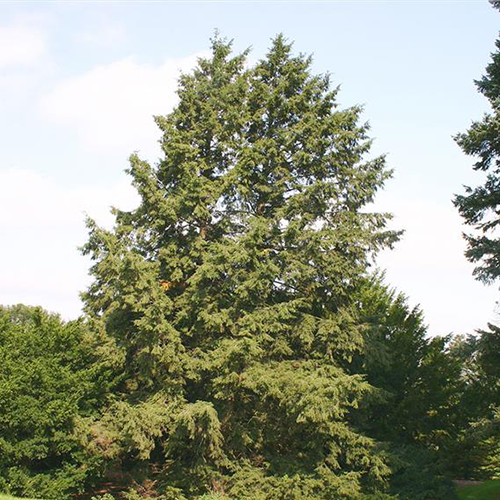
Tsuga is a genus of conifers in the pine family Pinaceae. The common name hemlock is derived from a perceived similarity in the smell of its crushed foliage to that of the unrelated plant poison hemlock. Unlike the latter, Tsuga species are not poisonous.
Eight to ten species are within the genus (depending on the authority), with four species occurring in North America and four to six in eastern Asia.
They are medium-sized to large evergreen trees, ranging from 10-60 m (33-197 ft) tall, with a conical to irregular crown, the latter occurring especially in some of the Asian species. The leading shoots generally droop. The bark is scaly and commonly deeply furrowed, with the colour ranging from grey to brown. The branches stem horizontally from the trunk and are usually arranged in flattened sprays that bend downward towards their tips.
Hemlock trees are not recommended due to their fire prone nature. Consider removing hemlock trees within 100′ of structures or 15′ of roadways. If a tree must be maintained in the defensible space zone (within 100′ of structures), extreme care should be taken to reduce the associated wildfire hazard.
Remove all limbs within 10′ of the ground, or 1/3 the height of the tree if less than 30′ tall
Remove all dead wood and twiggy growth regularly
Provide canopy separation so that no limbs touch nearby trees or plants
Remove all “ladder fuels







